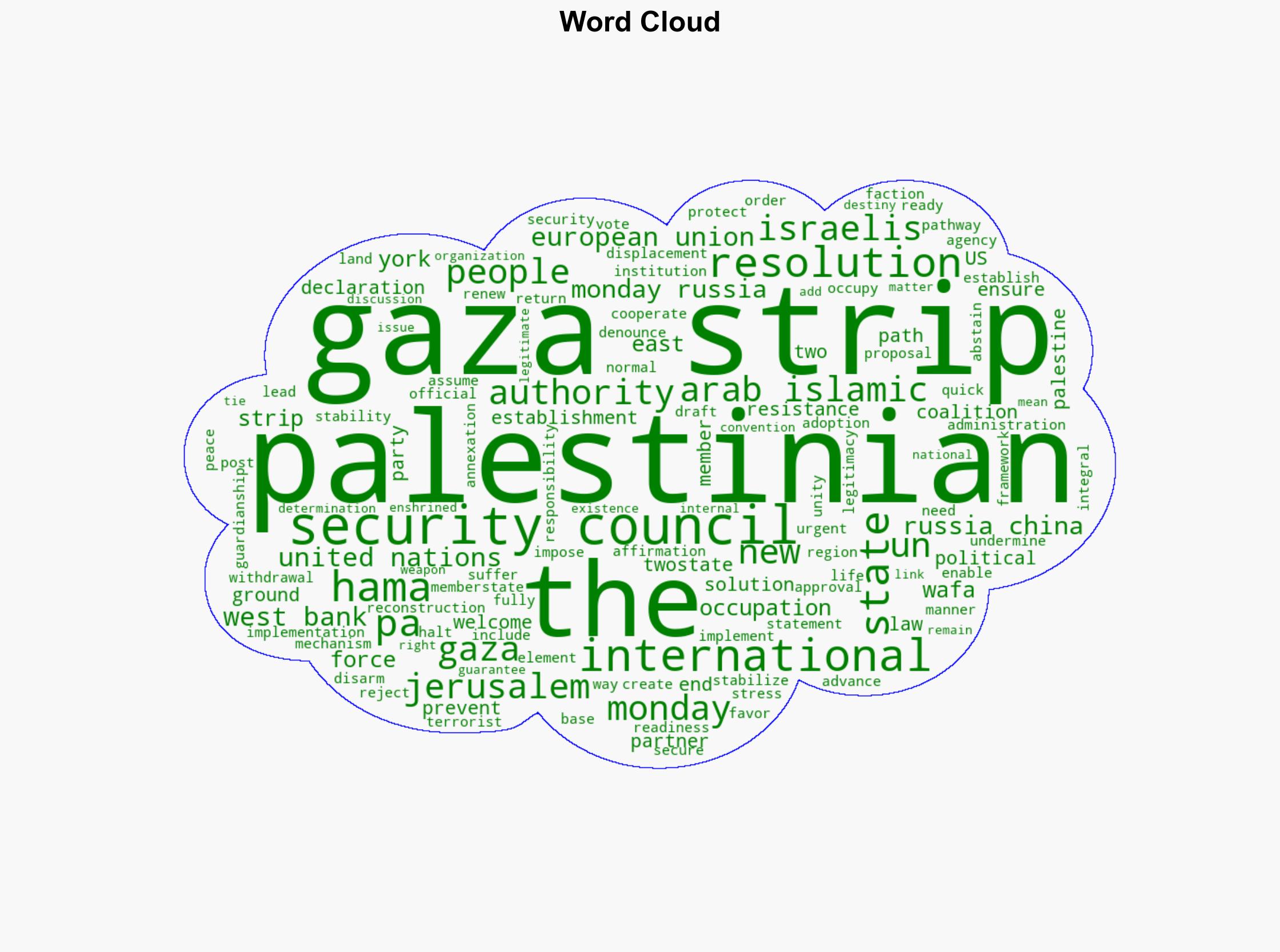PA welcomes UN Gaza resolution urges immediate implementation on the ground – Israelnationalnews.com
Published on: 2025-11-18
AI-powered OSINT brief from verified open sources. Automated NLP signal extraction with human verification. See our Methodology and Why WorldWideWatchers.
Intelligence Report:
1. BLUF (Bottom Line Up Front)
The Palestinian Authority (PA) welcomes the UN Security Council’s resolution on Gaza, emphasizing its implementation to stabilize the region and advance the two-state solution. However, Hamas’s rejection of the resolution poses a significant challenge. The most supported hypothesis is that the PA aims to leverage international support to strengthen its position in Gaza, but Hamas’s opposition could lead to increased tensions. Confidence Level: Moderate.
2. Competing Hypotheses
Hypothesis 1: The PA genuinely seeks to implement the UN resolution to stabilize Gaza and advance the two-state solution. This is supported by the PA’s readiness to cooperate with international actors and its emphasis on reconstruction and peace.
Hypothesis 2: The PA’s support for the resolution is primarily a strategic move to gain international legitimacy and weaken Hamas’s influence in Gaza. This is suggested by the PA’s focus on international cooperation and Hamas’s strong opposition to the resolution.
The most likely hypothesis is Hypothesis 2, given the historical rivalry between the PA and Hamas and the PA’s need to assert its authority in Gaza.
3. Key Assumptions and Red Flags
Assumptions: The PA has the capacity and willingness to implement the resolution effectively; international actors will support the PA’s efforts.
Red Flags: Hamas’s rejection of the resolution could lead to increased violence; potential lack of consensus among international actors on the resolution’s implementation.
Deception Indicators: The PA’s public statements may overstate its readiness to implement the resolution to gain international favor.
4. Implications and Strategic Risks
The resolution’s implementation could lead to increased political tensions between the PA and Hamas, potentially escalating into violence. Cyber and informational warfare could be employed by both sides to sway public opinion. Economic instability in Gaza may worsen if reconstruction efforts are delayed.
5. Recommendations and Outlook
- Actionable Steps: Encourage dialogue between the PA and Hamas to mitigate tensions; support international monitoring to ensure transparent implementation of the resolution.
- Best Scenario: Successful implementation of the resolution leads to stabilization and progress towards the two-state solution.
- Worst Scenario: Escalation of violence between the PA and Hamas, undermining regional stability.
- Most-likely Scenario: Partial implementation of the resolution with ongoing tensions between the PA and Hamas.
6. Key Individuals and Entities
Mahmoud Abbas (PA President), Ismail Haniyeh (Hamas Leader), UN Security Council, European Union, Arab and Islamic states.
7. Thematic Tags
Regional Focus, Middle East, Israeli-Palestinian Conflict, International Relations, Peace Process
Structured Analytic Techniques Applied
- Causal Layered Analysis (CLA): Analyze events across surface happenings, systems, worldviews, and myths.
- Cross-Impact Simulation: Model ripple effects across neighboring states, conflicts, or economic dependencies.
- Scenario Generation: Explore divergent futures under varying assumptions to identify plausible paths.
Explore more:
Regional Focus Briefs ·
Daily Summary ·
Support us
·





